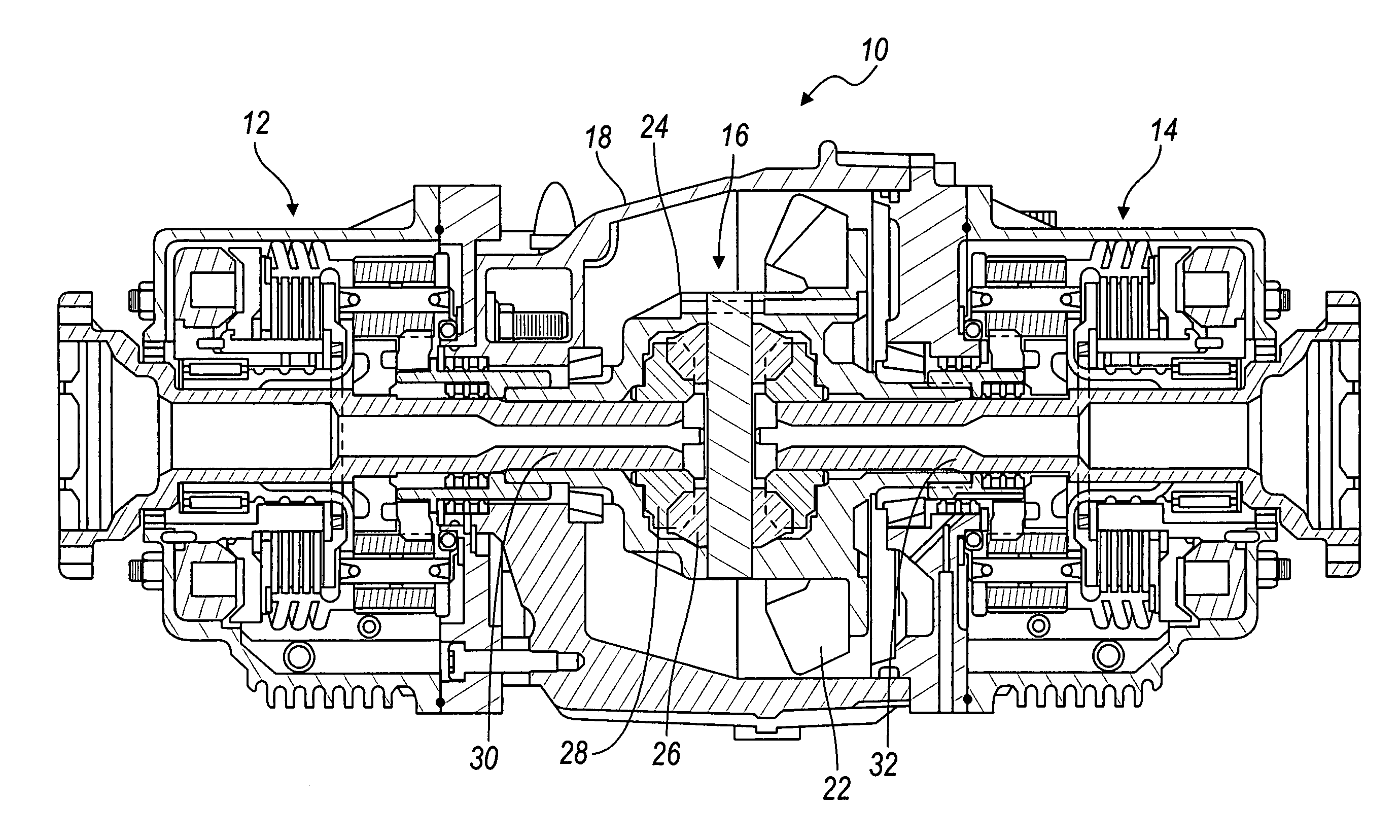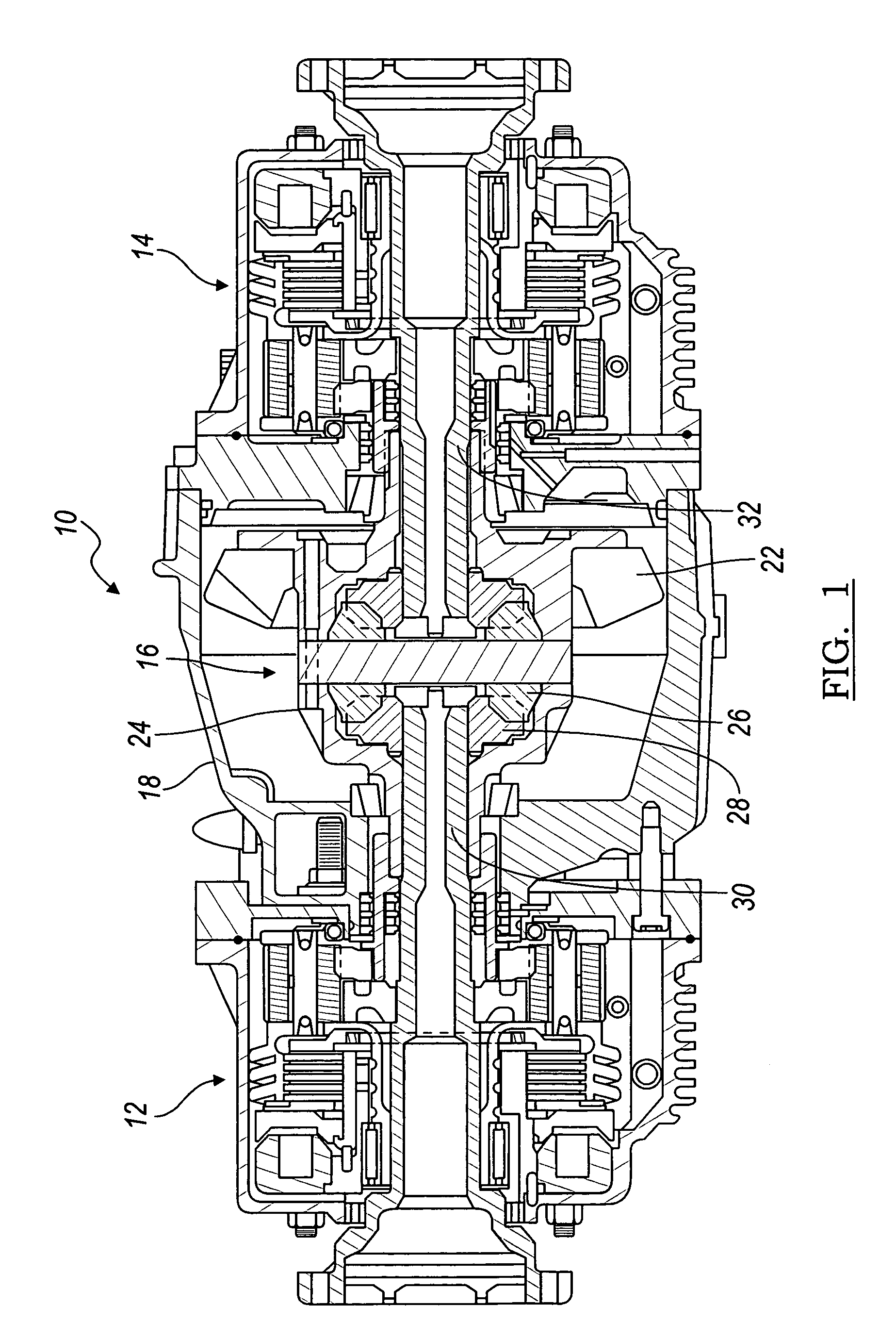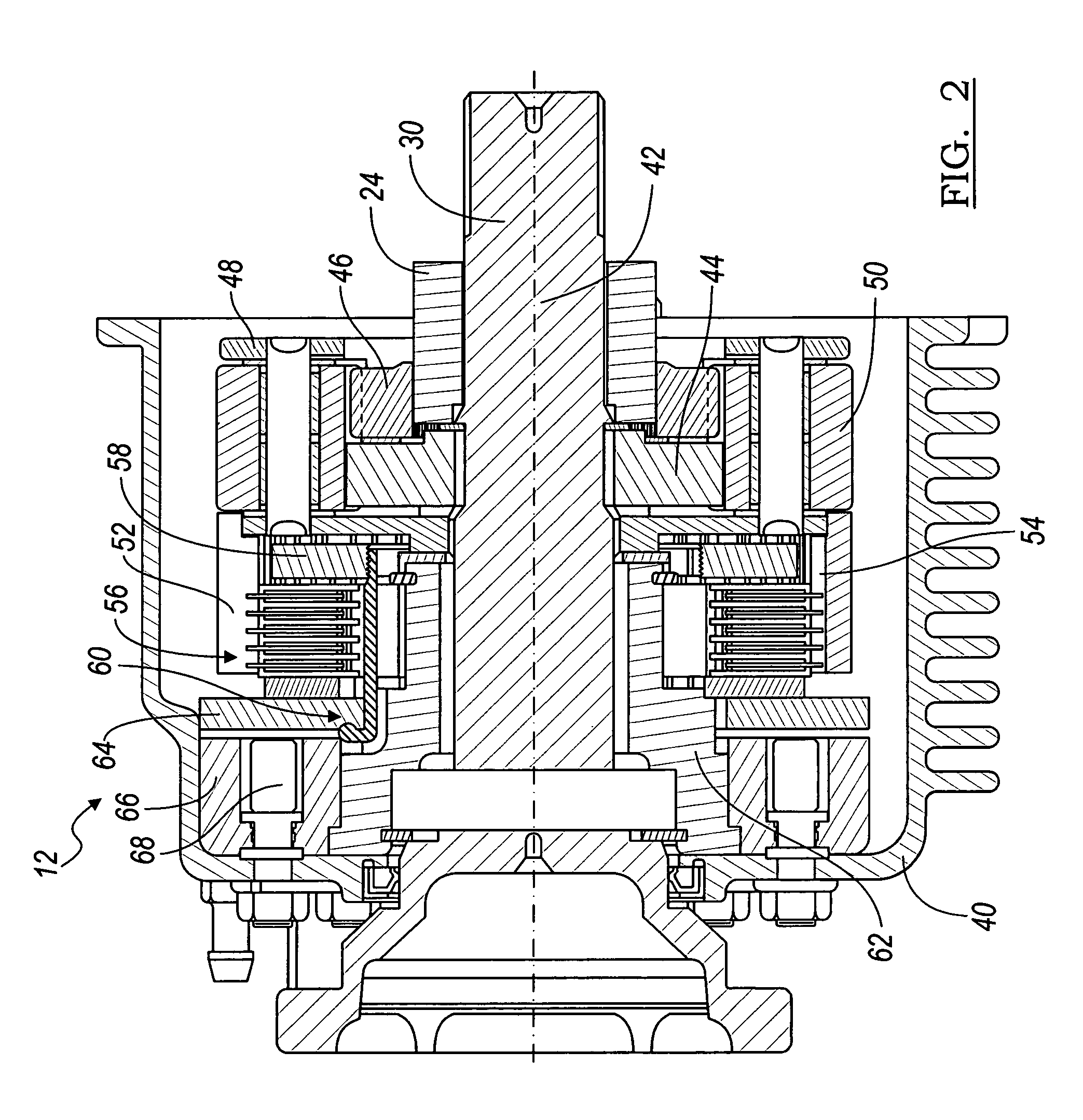Torque vectoring system
a technology of torque vectoring and differential design, applied in mechanical equipment, transportation and packaging, gearing, etc., can solve the problems of preventing significant torque from being developed on either axle, similar disadvantages, and too many limitations
- Summary
- Abstract
- Description
- Claims
- Application Information
AI Technical Summary
Benefits of technology
Problems solved by technology
Method used
Image
Examples
Embodiment Construction
[0023]A torque vectoring differential system is shown in FIG. 1 and is generally designated by reference number 10. The basic components of system 10 include a left torque vectoring assembly 12, a right torque vectoring assembly 14, and differential gear assembly 16. The basic mechanical features of the differential assembly 16 will be described followed by a description of the torque vectoring assemblies 12, 14.
[0024]Differential assembly 16 shown in FIG. 1 includes basic elements of typical differential assemblies, which include ring gear 22 which is driven by a hypoid or bevel gear pinion (not shown) coupled with the vehicle's propeller shaft. Ring gear 22 is coupled with differential carrier 24 which rotates with the ring gear 22. Two or more pinion gears 26 are rotatable about a common differential shaft mounted to the carrier. Pinion gears 26 mesh with a pair of side gears 28 which are in turn splined or otherwise connected with a pair of shafts 30 for the left and right hand ...
PUM
 Login to View More
Login to View More Abstract
Description
Claims
Application Information
 Login to View More
Login to View More - R&D
- Intellectual Property
- Life Sciences
- Materials
- Tech Scout
- Unparalleled Data Quality
- Higher Quality Content
- 60% Fewer Hallucinations
Browse by: Latest US Patents, China's latest patents, Technical Efficacy Thesaurus, Application Domain, Technology Topic, Popular Technical Reports.
© 2025 PatSnap. All rights reserved.Legal|Privacy policy|Modern Slavery Act Transparency Statement|Sitemap|About US| Contact US: help@patsnap.com



